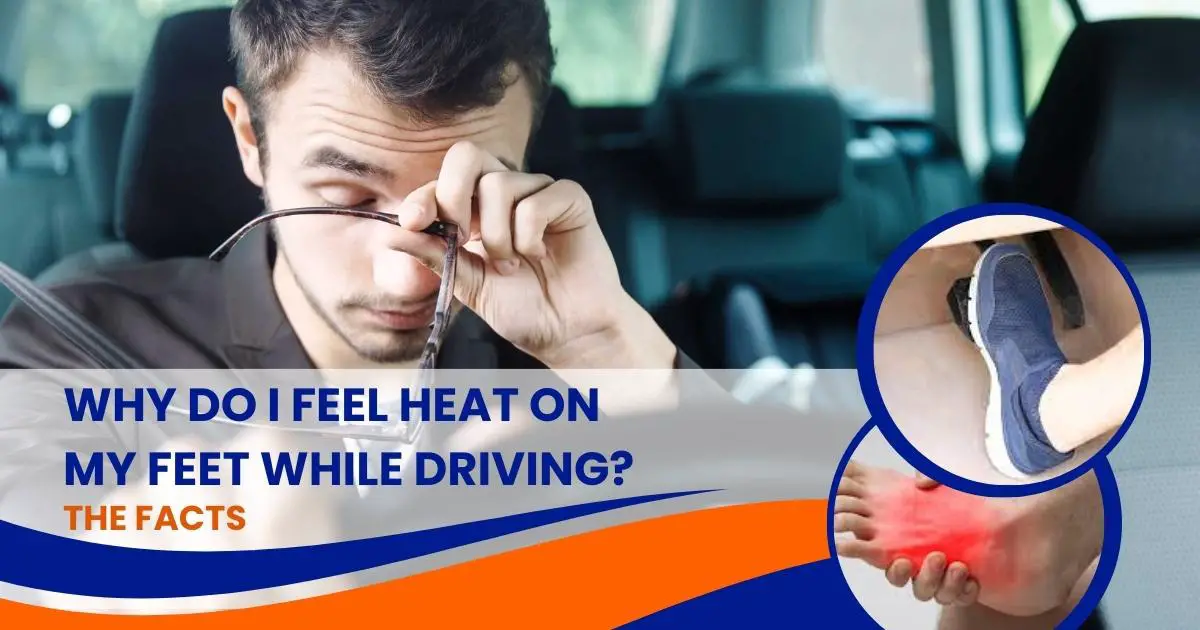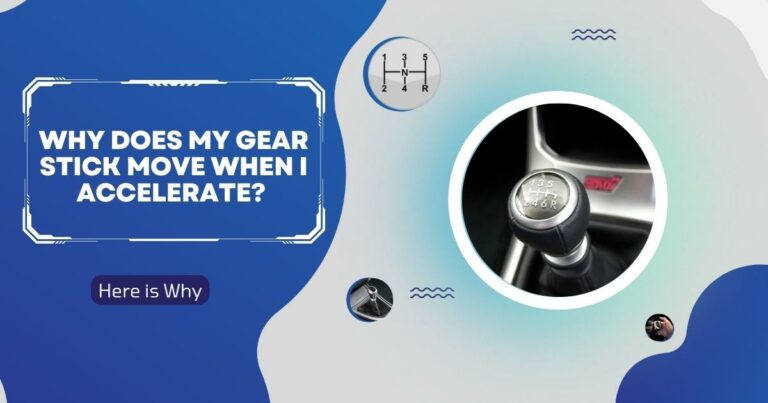Why Do I Feel Heat on My Feet While Driving? The Facts
Have you ever experienced the mysterious sensation of feeling some heat on your feet while driving? It’s an occurrence that many drivers have encountered, causing them to wonder about its causes and potential implications.
Driving is a common activity that many of us engage in daily, and we often spend long hours on the road. During this time, we may notice an unexpected rise in temperature, specifically on our feet. While this might initially seem like a trivial issue, it can become uncomfortable and distracting, affecting our overall driving experience.
Why Do I Feel Heat on My Feet While Driving?
Picture this- you’re behind the wheel, enjoying the ride, when suddenly your feet start to warm up as if they were sunbathing on a tropical beach. Feeling a sudden wave of heat on your feet while driving can be an unexpected and uncomfortable sensation. So, let’s embark on this exploration together and uncover the reasons behind the phenomenon of feeling the heat on your feet while driving.

Reasons Why You Feel Heat on the Feet While Driving
Poor vehicle design and ventilation system
The design and functionality of your car’s ventilation system play a crucial role in regulating the temperature within the cabin. In some vehicles, the heating system may have vents located near the floor, resulting in warm air being directed toward your feet. If the heating system is not properly balanced or if there are issues with the air distribution, it can lead to a concentrated heat feeling on your feet.
Inadequate ventilation within the cabin can also contribute to the sensation of heat on your feet. For instance, if the airflow is restricted or the air conditioning system is not functioning optimally, it can result in poor air circulation. As a result, heat may become trapped near the floor area, leading to increased warmth on your feet.
Inadequate insulation
Generally, insufficient insulation within the vehicle can make external heat penetrate the cabin more easily. This often occurs if there are gaps or leaks in the doors, windows, or other parts of the vehicle’s structure. As a result, ambient heat from the surroundings, such as the sun or hot pavement, can seep into the cabin and create a warm sensation, particularly near the floor.
Engine heat transfer
The engine generates heat as it runs, and this heat needs to be dissipated to prevent the engine from overheating. One of the ways this heat is managed is through the cooling system, which includes a radiator and coolant.
In older vehicles or those with inadequate insulation, you may feel the heat from the engine in the footwell area. This can be particularly noticeable during prolonged driving or if the engine is under heavy load.
The transfer of heat from the engine to the cabin can also occur if there are inadequate heat shields or insulation between the engine compartment and the cabin. This can result in feeling engine heat inside car through the firewall and the floor area, causing your feet to feel warmer.
Lack of proper maintenance
Neglecting regular maintenance and servicing of your vehicle can contribute to the feeling of heat on your feet while driving. Several maintenance-related factors can lead to increased heat transfer or reduced cooling efficiency, resulting in heat coming from driver’s side floor.
For example, if the cooling system is not functioning properly or the coolant levels are low, the engine may generate excess heat. Some the heat can transfer to the cabin through the floor area, especially near the foot area where the floor meets the doors.
Similarly, accumulated dust, debris, or obstructions in the vents or air passages can impede proper airflow distribution within the cabin. If the vents that direct cool air to the foot area are blocked, it can result in reduced cooling in that region.
Extremely hot weather conditions
External weather conditions, especially during hot summer months, can cause the temperature inside the car to rise significantly. For example, if your vehicle is parked under direct sunlight for an extended period, the heat can penetrate through the windows and increase the overall temperature within the cabin. As a result, your feet, being in proximity to the floor, may absorb this heat and create a warm sensation.
Incorrect climate control settings
Improperly adjusted climate control settings can also contribute to the heat on your feet while driving. If the temperature setting is too high, the heating system may generate excess warmth, which could be felt predominantly on your feet. Similarly, a malfunctioning air conditioning system may fail to cool the lower part of the cabin effectively, resulting in a warm feeling on the floor.
Road surface and exhaust system
The road surface you’re driving on can also impact the heat experienced by your feet. If you’re driving on hot pavement, the heat can radiate upwards and be transferred to the cabin floor. Additionally, if there are any leaks or issues with your car’s exhaust system, it could lead to the transfer of heat toward the undercarriage, making the floor area warmer.
How to Prevent Feeling Heat on Your Feet While Driving
To prevent feeling the heat on your feet while driving, you can take several measures to enhance your driving comfort. Here are a few preventive tips;
- Check and maintain your vehicle’s cooling system- Regularly inspect and maintain your vehicle’s cooling system. Ensure proper coolant levels, check for any leaks, and schedule routine maintenance to address any cooling system issues. This will help prevent excess heat from transferring to the cabin and reduce the likelihood of feeling the warmth on your feet.
- Maintain the air conditioning system-Properly maintain your vehicle’s air conditioning system to ensure it functions optimally. Clean or replace air filters regularly, check refrigerant levels, and address any malfunctions promptly. A well-functioning air conditioning system will help cool the cabin effectively, including the feet area.
- Insulate the cabin- Improve insulation within your vehicle’s cabin to reduce heat transfer. This can include checking for gaps or leaks in doors, windows, and other openings, and using weather-stripping or insulation materials to seal any areas where heat can enter the cabin. Ideally, this will help maintain a cooler environment inside the vehicle, including the driver’s side floor.
- Use reflective sunshades or window tinting- When parking your vehicle in the sun, use reflective sunshades on the windshield and side windows, or consider window tinting. These measures will help block or reflect sunlight, reducing the amount of heat that enters the cabin.
- Choose appropriate footwear- Always opt for lightweight and breathable footwear while driving. Thick-soled or heavily insulated shoes can hinder heat dissipation and make your feet feel warmer. Wearing breathable materials and open-toed shoes can help keep your feet cool.
- Adjust air vent positioning- Direct the air vents away from your feet or towards the upper body to promote better airflow throughout the cabin. This will help prevent warm air from blowing directly onto your feet.
- Use floor mats or insulating pads- Place insulating floor mats or pads on the floor of your vehicle. These can help reduce heat transfer from the road surface and insulate your feet from external heat sources.
- Park in shaded areas- Whenever possible, park your vehicle in shaded areas to minimize heat buildup inside the cabin. This will help maintain a cooler temperature and reduce the warmth felt on your feet when you start driving.
Also Read: How to Turn Off Eco Mode Mitsubishi Outlander- Worth It?
Conclusion
The feeling of heat on your feet while driving can be a bothersome experience. A comfortable driving experience begins with understanding and taking action to mitigate the causes of heat buildup in your vehicle’s cabin. By addressing the above factors and implementing preventive measures, you can enhance your driving comfort and bid farewell to the unwelcome warmth on your feet.






